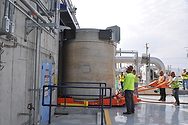Hanford
From ‘A Space Odyssey’ to the nuclear age
Hanford’s new AI tool named HAL helps workers save time on repetitive tasks
Read MoreHanford Area Economic Investment Fund
TRIDEC to assist Hanford investment fund after legal dispute
HAEIF has distributed more than $26 million in loans, grants
Read More















